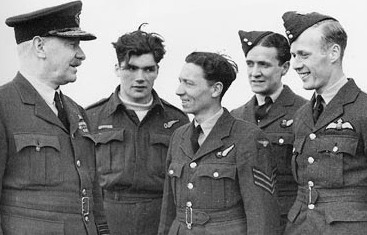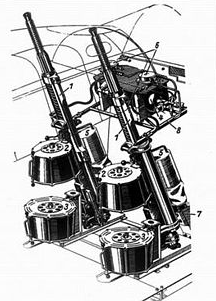
Freeman Dyson’s War by Numbers

My science hero is Richard Feynman, but his understudy, Freeman Dyson (above), who died on February 28, runs a close second. To him maths came as naturally as breathing. At the age of four he was trying to calculate the number of atoms in the sun. By 15 at Winchester College he was teaching himself Russian to read the best book on number theory, by Ivan Vinogradov.
Meet Tony Thomas, who will be launching his latest book,
Come To Think Of It,
at 6.30pm tomorrow night (March 10) at Il Gambero,
166 Lygon St, Carlton
At about 24, he obtained two letters supporting his switch from Cambridge to join nuclear physicist Hans Bethe’s group at Cornell University. One letter said he was “not completely stupid” and the other more generously called him “the best mathematician in Britain.”
His climate scepticism was a thorn in the side of orthodox climate scientists. As Arnis Rītups put it in a long piece in a Latvian journal four years ago,
In the last decade Dyson has become one of the most authoritative voices to assert that ‘global warming’ is first of all not global (it is limited to the cold regions, winter and nighttime); and second, there is no scientific evidence that it is dangerous, and third, that the related ideology and propaganda turns people’s attention away from much more pressing problems.[i]
Presciently, Ritups asked him
It’s a strange fact of human life that thinking about one’s death somehow intensifies one’s life. Do you have an explanation for this close relationship between consciousness and death?
To which Dyson replied:
No, I don’t think I would say I have an explanation. It’s certainly common sense that if life went on forever it would be very boring. (Laughs.) It would be very boring to have to go through the same routines over and over forever. I think it’s a practical matter. Certainly, human society absolutely depends on people dying. If everybody were still around, there would be nothing much for the young people to do. (Laughs.)
I was cheered by this excellent interview, especially Dyson’s view that even nuclear war wouldn’t destroy humanity and civilisation. Incidentally, as well as winning top science prizes, Freeman also won the Templeton Prize in 2000 for progress in religion.
Dyson: “I think it’s very hard for us humans to destroy ourselves. It’s not as easy as people imagine.”
Ritups: How come?
Dyson: Well, because we are extraordinarily resilient.
Ritups: Like rats, you mean?
Dyson: Yes. Probably rats and humans are about equally good. (Laughs.)
Ritups: Well, that gives us some basis for optimism about the future.
Dyson: Yes! When you look at the possible ways we can destroy ourselves you’d think nuclear war would be the most likely to wipe us out. But if you look at a real nuclear war … Of course, it would destroy all the cities, which would be sad for all sorts of people—there’s no doubt it would be a huge disaster—but there would still be a lot of villages left where people would hardly notice. There would be places that happened to not get radiated. When you have a lot of radiation in the air it mostly comes to the ground via rains. So if you happen to be in a place where it’s not raining, you’re lucky. Also if you happen to live in a cave, even a few feet underground, it reduces the radiation very strongly. So it’s very hard to imagine there wouldn’t be lots of humans surviving. And, of course, it takes only a few to start the species all over again.
Freeman, a most kind and upright man, spent the war years from 1943 in Operational Research calculating how to make Bomber Command more efficient at obliterating German cities, preferably by firestorms.. He was only 19-20. To take his mind off his job, he created proofs in pure mathematics which later earned him a berth at Trinity College. He switched to particle physics because it offered harder problems.
I’m a World War Two buff and particularly interested in his work for Bomber Command. I’ve drawn heavily on his 6000-word essay A Failure of Intelligence. By statistical reasoning Dyson found that to minimise air casualties the Lancasters should be stripped of gun turrets and fly packed densely together, despite the risk of collisions. Such a policy would enable the planes to fly higher and 50mph faster to evade night fighters and spend less time over Germany’s flak belts. The turrets did not save bombers, because the gunners rarely saw the fighters that killed them. He found an ally in Air Vice-Marshal Sir Ralph Cochrane, commander of 5 Group. Freeman writes (in his book, Dreams of Earth and Sky), “Being a flamboyant character, he planned to rip out the Lancaster’s gun turrets and all the associated dead weight, ground the two gunners, and paint the whole thing white. Then he would fly it over Germany, so high and so fast that nobody could shoot him down.” He was overruled and the white Lancaster never flew.
Dyson also verified statistically that crews’ chance of survival on missions did not increase with experience. About 75 per cent of crew never completed their 30-ops tours, but which planes were shot down turned out to be entirely random. The RAF was having none of it. First, crew morale would suffer if there were no gunners to provide at least the illusion of hitting back at night fighters. Second, crews on just about every trip saw, or thought they saw, collisions. And third, crews needed to believe that experience made them safer after each trip.
Freeman was in a team based in trailers behind Bomber Command’s main headquarters building in Buckinghamshire. He says the Germans must have known about the buildings but never tried to bomb them. Billeted in a nearby village and provided with the classic English weekly bath, he biked uphill 5 miles to work and coasted home after knock-off.
Bomber command was absorbing a quarter of the entire British war effort. “Sometimes, as I was struggling up the hill, an Air Force limousine would zoom by, and I would have a quick glimpse of our commander in chief, Sir Arthur Harris (below), sitting in the back, on his way to give the orders that sent thousands of boys my age to their deaths.”

Dyson and the 30 other Operations Research people remained civilians, giving independent scientific/technical advice to top commanders. The system had spun off from a Royal Navy model, testing whether claimed U-Boat sinkings were valid. “Every ship or airplane that dropped a depth charge somewhere near a U-boat was apt to claim a kill,” he says. Dyson’s statistics involved assessing bomber damage and losses, with peripheral work on electronic counter-measures. The uniformed women auxiliaries did most of the real work and made a depressing situation bearable. “Their leader was Sergeant Asplen, a tall and strikingly beautiful girl whose authority was never questioned. The sergeant kept herself free of romantic entanglements.”
His first day at work followed the initial use on a Hamburg raid of the Window device. This involved crew throwing out strips of paper coated with aluminium paint to confuse German radar’s ability to guide night fighters to individual bombers. The team was joyful: losses were only 12 out of 791 bombers, or 1.5 per cent rather than the regular 5 per cent. Window had saved about 180 of our boys that night, he noted.
The attacks on Hamburg continued for his first week, with the second raid generating a firestorm that killed 40,000. Normally civilians bivouacked underground and even a big raid was likely to kill “only” a few thousand. But a firestorm suffocated or roasted everyone underground as well. The RAF succeeded in creating only one other firestorm, at Dresden in 1945, which killed 25,000-60,000.
Freeman eventually decided that firestorms only occurred where buildings were dense, incendiaries fell in concentrated areas, and atmospheric conditions were right. The Americans managed one in Tokyo –100,000 killed — and whose results can be seen in the post-raid photo at right below.

The Germans quickly countered Window by ignoring individual bombers and guiding their night fighters into the stream itself. Loss rates within a month hit 5 per cent again. Meanwhile, Freeman continued to verify statistically the collision rate – not easy when two out of three collisions over Germany left no survivors. Not surprisingly, aircrews liked to quit the the tight formations for fear of collisions. They would see in the distance broken bombers tumbling to earth, even when night fighters were absent. Moreover, the crews were constantly having what they saw as near-misses.
The bombers corkscrewed to throw off anti-aircraft guns, weaving up and down and side-to-side. The parameters of Freeman’s collision formulae were wildly variable but he was at least able to say the maximum collision rate would be about 1 per cent, well below the total loss per operation of 5 per cent. “Even if we squeezed the bomber stream to the highest possible density, collisions would not be the main cause of losses,” he observed.
Freeman enjoyed interviewing crew who survived collisions and returned. One odd case was a pair of those fast wooden Mosquitos whose pilots were so confident they collided while staging a mock dogfight over Munich.
 The real culprit in losses was the German system coded Shraege Musik, translated as ‘crooked music’ or sometimes Jazz. This involved night fighters creeping below a bomber’s blind spot and dousing the plane with cannon (right) installed to fire 60deg upwards. Freeman: “This system efficiently destroyed thousands of bombers, and we did not even know that it existed. This was the greatest failure of the Operations Research. We learned about it too late to do anything to counter it.”
The real culprit in losses was the German system coded Shraege Musik, translated as ‘crooked music’ or sometimes Jazz. This involved night fighters creeping below a bomber’s blind spot and dousing the plane with cannon (right) installed to fire 60deg upwards. Freeman: “This system efficiently destroyed thousands of bombers, and we did not even know that it existed. This was the greatest failure of the Operations Research. We learned about it too late to do anything to counter it.”
The German system also accounted for much of the finding that crews were shot down regardless of their experience. “I blame [his team], and I blame myself in particular, for not taking this result seriously enough,” Freeman wrote. “The evidence showed that the main cause of losses was an attack that gave experienced crews no chance either to escape or to defend themselves. If we had taken the evidence more seriously, we might have discovered Schräge Musik in time to respond with effective countermeasures.”
Freeman interviewed survivors whose planes had been shot up. Most had never seen the fighter and had no warning of an attack. There was just a sudden burst of cannon fire, and the aircraft fell apart around them. “Again, we missed an essential clue that might have led us to Schräge Musik.”
Some of his work had a null result. The RAF had installed a tail-mounted device called Monica. When Monica picked up an object behind, it squealed over the intercom. Crews disliked all the false alarms and turned it off so they could use the intercom. Freeman had to answer whether Monica was useful. For this he invented a form of ‘meta-analysis’, later a standard technique in epidemiology and drug trials. The crews were right – Monica was useless.
Everyone knows that the RAF won the Battle of Britain but Freeman describes how the RAF lost the aerial Battle of Berlin. (I previously wrote on that battle using a flak tower gunner’s perspective.)
‘Bomber’ Harris started the Battle of Berlin in 1943 to prove that he could bomb Germany out of the war. The first 444-bomber raid in November was a success with only nine planes lost. This was not because of Window but from misleading the German controllers to mis-route their fighters to Mannheim. Fifteen big attacks followed in 1943 and 1944, none very successful. The reasons included cloudy weather and strengthened defences. In the final attack the RAF lost a horrific 72 bombers out of 791, or 9 per cent.[ii] The Germans knew well the routes of the bomber streams and the fighters were knocking down bombers all the way. All up, the Berlin campaign cost 492 bombers and 3,000 aircrew, with no serious disruption to Berlin’s industry.
One of Freeman’s colleagues, Sebastian Pease, escaped from the trailers and spent his time with 218 Stirling Squadron in the field. Freeman only found out what Pease was doing 50 years later. He was coaching aircrews in a precise navigation system called G-H, requiring two-way communication with ground stations. It was fitted to slow and obsolete Stirling bombers which could then do small precision raids. “The rest of us were sitting at Command Headquarters, depressed and miserable because our losses of aircraft and aircrew were tremendous and we were unable to do much to help.”
In early 1944, 218 Squadron stopped bombing and began training for a super-secret D-Day component called GLIMMER. This involved Stirlings flying low, tight circles over the channel and dropping Window, in conjunction with special shipping. The scheme tricked the German radar into “seeing” a phantom invasion fleet heading for Pas de Calais while the real fleet was bound for Normandy, 200 miles west. Apropos of Pease’s 50-year silence, Freeman’s boss, Reuben Smeed, once said, “In this business, you have a choice. Either you get something done or you get the credit for it, but not both.” Smeed went on to civilian work globally on intelligent traffic-light systems.
Freeman’s group was sickened by the Dresden raids but the British public was all for bringing the war home to German civilians.
“I remember arguing about the morality of city bombing with the wife of a senior air force officer, after the Dresden attack. She was a well-educated and intelligent woman who worked part-time for Operational Research. I asked her whether she really believed that it was right to kill German women and babies in large numbers at that late stage of the war. She answered, ‘Oh yes. It is good to kill the babies especially. I am not thinking of this war but of the next one, 20 years from now. The next time those babies will be the soldiers.’ After fighting Germans for ten years, four in the first war and six in the second, we had become almost as bloody-minded as Sir Arthur [Harris],” wrote Freeman, who speculated that if Britain in 1936 had focused on building ships rather than bombers, it might have invaded France and ended the war a year earlier. “But in 1943, we had the bombers, and we did not have the ships, and the problem was to do the best we could with what we had.”
Tony Thomas’ new book, Come To Think Of It – essays to tickle the brain, will be launched at 6.30pm on Tuesday March 10 at Il Gambero, 166 Lygon St, Carlton. All welcome. Contact [email protected]
[i] Freeman punctures the entire global warming “emergency” in these few words:
As a scientist I do not have much faith in predictions. Science is organized unpredictability. The best scientists like to arrange things in an experiment to be as unpredictable as possible, and then they do the experiment to see what will happen. You might say that if something is predictable then it is not science. When I make predictions, I am not speaking as a scientist. I am speaking as a story-teller, and my predictions are science-fiction rather than science. The predictions of science-fiction writers are notoriously inaccurate. Their purpose is to imagine what might happen rather than to describe what will happen.
[ii] This was only exceeded by the 12 per cent loss rate in the Nuremberg raid a week later.
Madam: Archbishop Fisher (July-August 2024) does not resist the attacks on his church by the political, social or scientific atheists and those who insist on not being told what to do.
Aug 29 2024
6 mins
To claim Aborigines have the world's oldest continuous culture is to misunderstand the meaning of culture, which continuously changes over time and location. For a culture not to change over time would be a reproach and certainly not a cause for celebration, for it would indicate that there had been no capacity to adapt. Clearly this has not been the case
Aug 20 2024
23 mins
A friend and longtime supporter of Quadrant, Clive James sent us a poem in 2010, which we published in our December issue. Like the Taronga Park Aquarium he recalls in its 'mocked-up sandstone cave' it's not to be forgotten
Aug 16 2024
2 mins







